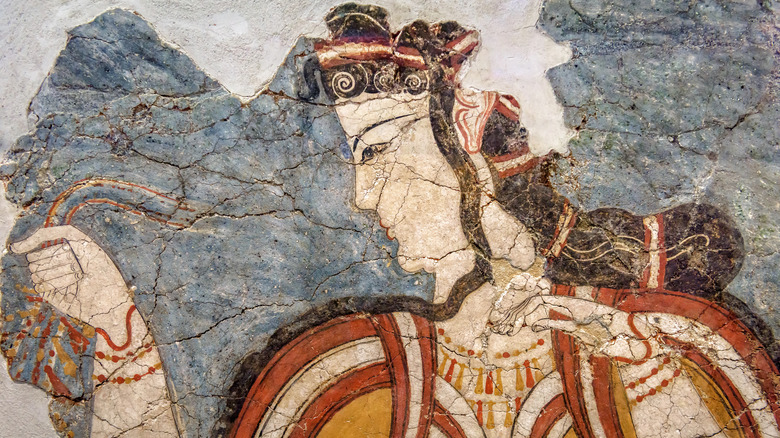Are People Cremated With Clothing?
Throughout the millennia, burial rituals have changed and evolved across cultures. Some bury their loved ones in the ground while others inter their bodies in tombs or mausoleums. There's even one practice called water burial, in which the body is set afloat in a "death ship," or instead, simply laid to rest in the depths, per Britannica. Another Madagascar tradition called Famadihana involves the removal of dead bodies from where they lay every few years to refresh their burial clothing. Mourners then dance near the tomb. Yet another common burial ritual with a long legacy is cremation, in which the body of the deceased person is burned, leaving behind only ash. This choice has become increasingly popular.
These days, though, cremation is more common than ever before, with more than half of all bodies cremated in 2020. That number is only expected to grow, with roughly three-quarters of all people choosing cremation by 2030, per Statista. Some of this growth is owed to the popular perception that cremation is better for the environment than traditional burial. There's some truth to this claim, but cremation does take its own ecological toll (via Insider). Nevertheless, the increased popularity of cremation naturally raises many similar questions. Such as, are people wearing clothing when they are cremated?
Prehistoric cremation
People have been practicing cremation since before the time of Ancient Greeks, beginning around 1000 B.C. if not earlier, as Britannica records. There's evidence of cremation as far back as the Stone Age in Europe. That evidence showed up when decorative, specially marked urns were uncovered that experts believe could have been used to store the ash of the deceased. It's also known that during this period, cremations occurred not just in Europe but the practice also spread throughout the Near East, if not farther, according to the Cremation Association.
From there, the act of cremation is known to have been adopted all over Europe, including but not limited to the British Isles, as well as Hungary, Spain, and Northern Italy. Although it's not known for sure whether bodies were cremated in clothing during this period, it is known that bodies were most often buried fully dressed, or covered in a shroud. For this reason, then, it's also possible that ancient humans were cremated while wearing their clothes, or at least while they were covered by some kind of cloth, as CNN reports.
Cremation throughout history
In the early recorded history of cremation, ancient Greeks burned their defeated foes on the battlefield, as Britannica explains. In those days. the act of cremation was most often performed on the battlefield itself, where fallen enemy soldiers were set alight, before their ashes were returned to their native homeland for a traditional burial according to their local custom. For this reason, cremation became associated with bravery and valor. Those bodies were most likely clothed when they were burned.
The act of cremation continued on throughout time. It was, in fact, the preferred burial tradition of certain pagan Scandinavian cultures, according to Britannica. Nevertheless, many people or families of those who had died still chose to bury their loved ones, and over time, and as Christianity spread, burial became the preferred option in the West. Cremation remained popular in India. In Europe, during the devastation caused by the Black Death, the overwhelming numbers of dead were burned. As Christianity gained prominence, though, cremation became almost non-existent, according to the Cremation Society.
Modern cremation
Modern cremation, though, is very different from what the practice was like in the past. Included in today's practices is whether or not the deceased person undergoing the process can wear clothes. Other ways that modern cremation differs from ancient cremation rituals include the fact that open fire is no longer used. Instead, bodies are put in large chambers and they are gradually heated until all that's left of the person are ashes, which are typically white. The entire process takes a few hours, according to Britannica.
Are there any traces of fabric left behind in the ash produced by modern cremation, such as would be the case if the person in question was wearing clothing? According to the Cremation Society of America (CSA), that's a matter of personal choice. Most often, bodies are cremated under a sheet, but they can be cremated in clothing, either whatever the dead person is wearing when they arrive at the cremation facility, or whatever their family or loved ones choose for them. Certain kinds of clothing, however, cannot be worn in cremation, such as anything made from certain types of synthetic material, metal, or glass, among other examples, per CSA.



